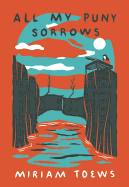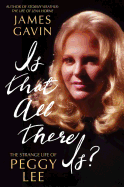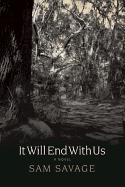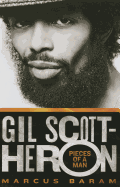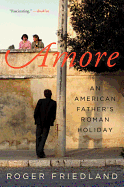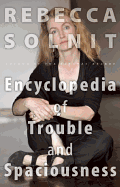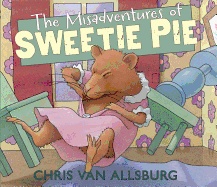Friday, November 21, 2014
It's hard not to get emotional when watching the trailer for the new film The Imitation Game. Benedict Cumberbatch, always utterly brilliant at playing the intelligent other--from his turn as Sherlock on the BBC series to his plausibly empathetic character in Star Trek into Darkness--may be at his best yet portraying Alan Turing, a hero for breaking World War II German ciphers and the father of modern computing. That he would also be prosecuted for homosexuality by the social mores of his day is almost too much to bear.

Author Andrew Hodges, himself an Oxford mathematician, covers Turing's birth to parents who were often absent due to his father's posting in India, his early years as a diffident student in grade school, his ascension through the ranks as his genius was discovered in secondary and university, and his essential role in breaking the German Enigma code that shortened World War II and helped the Allies win.
After the war, Turing took posts at a variety of institutions, including Princeton, but never quite fit in. He preferred bicycles over cars, was fairly unkempt in both dress and manners, and was only barely tolerated for his genius. Alan Turing took his own life in 1954, two years after his conviction for lewd acts as a homosexual.
The Imitation Game is directed by respected Norwegian director Morten Tyldum (Headhunters), with a screenplay written by newcomer Graham Moore. The film opens in theaters today. --Rob LeFebvre, freelance writer and editor
All My Puny Sorrows
by Miriam Toews
A quasi-autobiographical novel, All My Puny Sorrows reflects the relationship between Miriam Toews (Swing Low) and her older sister, who committed suicide at age 51 in 2010. Sisters Yolandi and Elfrieda grew up in a Mennonite community where the elders disapproved of the girls' independence and spirit, threatening to punish their father with a short excommunication for letting Elf have a piano.
Now that the sisters are grown and separated from that community, Yoli's life is a mess: two divorces, her teenaged offspring wreaking havoc on her patience, her teen fiction series on hold while she toils ineffectually at a more literary manuscript. By comparison, Elf's life looks perfect. She's a world-famous pianist, her husband adores her, and she's wealthy and glamorous. However, Elf keeps attempting suicide and landing in psychiatric facilities, and Yoli is the one determined to keep her alive.
Yoli tries valiantly to shoulder her sisterly responsibilities, traveling from Toronto to Elf's side in Winnipeg after each attempt. When Elf asks Yoli to take her to Switzerland, where assisted suicide is legal, Yoli must decide just how far her responsibility extends, and in which direction: saving her sister's life and hoping for her recovery, or helping end her suffering.
Toews captures perfectly the conflict between a family wondering why their love isn't enough and the suicidal woman whose suffering cannot be helped by their care. Yet in the midst of so much sorrow, Toews manages to illuminate moments of joy, hilarity and sheer emotion that will leave readers weak in the knees. --Jaclyn Fulwood, blogger at Infinite Reads
Discover: Two sisters, one determined to kill herself and the other determined to stop her.
It Will End with Us
by Sam Savage
Sam Savage published his first novel, Firmin--an odd, comic gem about a rat who likes to read--at 65. Eight years later, he has published his fourth novel (with the same publisher): It Will End with Us.
It's a curious mix of Proust and Beckett, set in Hope Springs, S.C., in the 1940s and '50s, when the old South is coming to an end. In the voice of Eve Annette Trezevant Taggart, the story appears on the page in widely spaced one- or two-sentence paragraphs, closer to a prose poem than a novel. Many of the paragraphs begin with "I remember," as Eve looks back at herself, her brothers, her father and, most of all, her mother, who loved to read and write, who hoped to be a writer. At her mother's desk, Eve tells us, "I feel that I am sitting in for her... I am my mother."
"I remember" takes on an almost meditative invocation, as Eve delves deeply into her past like Proust's great narrator who constantly searches for lost time. This privileged young woman, with her servants and her big house, tells us the "world seems such a poor and barren place" and "very little of importance happens now." And so, as with Beckett's speaker in The Unnamable, Eve's monologue goes on and on. Savage assembles each fragmented memory, like pieces in a puzzle, into a strange and powerful portrait of a woman obsessed with family, the old South and the act of remembering itself. --Tom Lavoie, former publisher
Discover: A small book that tells a huge story about a Southern woman's memories of her mother and a vanishing world.
Science Fiction & Fantasy
The Future Falls
by Tanya Huff
The irrepressible Gale family--of the magical baked goods, shape-shifting men and stampeding sex drives--returns for a third adventure in Tanya Huff's Gale Girls series (The Enchantment Emporium, The Wild Ways).
When Charlotte "Charlie" Gale finds out an extinction-event-sized asteroid will hit Earth in 22 months, she doesn't panic--at least, not until she learns that not even her aunties, all formidable witches, can stop it because their magic is tethered to the earth. Charlie's own magic isn't linked to a certain location, but she can't affect the asteroid from such a great distance, and asking the fae Courts for help backfires into a firestorm of fairy mischief. Her only ally is her 17-year-old distant cousin Jack, a budding sorcerer who can shape-shift into dragon form.
Unfortunately for 30-year-old Charlie, spending time with Jack reminds her that they have feelings for each other that can't come to anything, thanks to arcane family rules about maximum marital age differences. Unfortunately for the Earth, Jack has no training or control over his power. The two will need more than the aunties' charmed pies to save the world, maneuver around family squabbles and machinations and maybe even have a shot at true love.
While hardcore urban-fantasy fans may catch on to the rules of Huff's complicated universe after a few chapters, it's probably best to read the first two titles in the series first. It'll be worth it: this quirky, girl-powered gambol delivers a powerful one-two punch of romance and magic. --Jaclyn Fulwood, blogger at Infinite Reads
Discover: The third in Tanya Huff's Gale Girls series, in which Charlie Gale must save the world from an asteroid and her heart from her family's rules.
Biography & Memoir
Is That All There Is?: The Strange Life of Peggy Lee
by James Gavin
By any commercial account, Peggy Lee's life was a huge success. In a 60-year career that covered the glory days of big band swing, cabaret clubs, cool jazz and rock and roll, she sold more than 20 million albums, was nominated for an Academy Award, wrote and performed dozens of her own songs (including four in Disney's animated Lady and the Tramp), and published an autobiography and a poetry collection. Yet, as James Gavin's new comprehensive biography suggests, the woman born Norma Deloris Egstrom never quite found satisfaction from fame, romance and riches.
Borrowing its title from one of her most famous songs, Is That All There Is? boasts descriptions of Lee from dozens of music heavyweights such as Count Basie ("Are you sure there's not some spade in you?"), Downbeat critic Dave Dexter, Jr. ("This chick sounds like a drunken old wh*re with the hots"), lyricist Jerry Leiber ("the funkiest white woman alive"), even Iggy Pop, of all people ("Peggy was a super-sassy super-hottie... she also had beautiful eyes and a bomb a**").
Gavin (Stormy Weather) takes us behind the glamorous façade to the ambitious, often disappointed "Miss Peggy Lee," who never had enough money, lovers, or booze and pills to leave her hard-luck, small-town past behind. With neither the fawning adoration of Peter Richmond's 2007 biography Fever nor the tell-all scandal of a gossip column, Gavin's Is That All There Is? presents a balanced story of the life of a fragile star with extraordinary talent but also more than her share of insecurity, extravagance and eccentricity. --Bruce Jacobs, founding partner, Watermark Books & Cafe, Wichita, Kan.
Discover: A detailed portrait of the legendary artist Peggy Lee and her complicated life.
Gil Scott-Heron: Pieces of a Man
by Marcus Baram
Politically active, musically eclectic, poetically in the tradition of Langston Hughes, and ultimately brought down by a Richard Pryor-like addiction to crack cocaine, Gil Scott-Heron was a social force throughout the last half of the 20th century who never achieved the big-money fame earned by several of his African-American contemporaries, many of whom appropriated his rap and percussion style.
Journalist Marcus Baram knew Scott-Heron and had access to the recollections of the musician's family, friends and bandmates, as well as those of the man himself. From this rich material, Scott-Heron's life becomes clear, starting with his tough childhood under the care of his grandmother Lillie. Scott-Heron worked his way into a tony New York prep school and eventually earned an MFA at Johns Hopkins. Along the way, he participated in campus protests against the Vietnam War and racial injustice and joined Washington's politically active Lost Poets writer colony.
His poem "The Revolution Will Not Be Televised" found its lyrics and title co-opted by nearly everyone with a revolutionary agenda, including Greek student protesters and even Nike's advertising department. It was music that most engaged him and touched the widest audience. His enduring songs "The Bottle" and "Johannesburg" cracked the Billboard charts and led to financially rewarding recording contracts.
For a while, Scott-Heron was riding a rising tide, upgrading his mother's Bronx apartment and finding easy access to the coke and drugs that fueled the music industry. It was the latter that did him in. Missed gigs, drug busts, jail time, rehab... it's a well-trod path. Baram tells it all. --Bruce Jacobs, founding partner Watermark Books & Cafe, Wichita, Kan.
Discover: The first full-length biography of a seminal figure in black music and late 20th-century politics.
History
Lives in Ruins: Archaeologists and the Seductive Lure of Human Rubble
by Marilyn Johnson
Marilyn Johnson (This Book Is Overdue!; The Dead Beat) had long been captivated by the idea of digging in the dirt and bringing up treasure in the form of human history, and was awed by the men and women who do that work. Archeologists are plagued by low pay, scant job security and the pressures of a world that values many things more than it values potsherds and human remains. With Lives in Ruins, Johnson pays homage to and learns about these individuals and their often-dirty, often-uncomfortable, always-intriguing work.
In pursuit of archeology's magic, romance, filth and smells, Johnson enrolls in several different field schools, working as an archeologist-in-training (with varying degrees of success). She attends conferences and travels to notable sites ranging from Peru's famous Machu Picchu to the historically indispensable Fishkill Supply Depot in New York. She learns techniques and technologies, views artifacts and absorbs history, but her most important work comes when she meets archeologists. They are tough, intelligent, deeply committed people; they are "cultural chameleons" who work in dust and grit and heat and are also capable of attending formal affairs to advocate passionately for preservation. When archeologists and the U.S. military team up to defend cultural heritage from the violence of war, Johnson comments on the intersection of two "cautious, even paranoid professions."
Lives in Ruins will captivate a variety of readers: those who, like Johnson, dreamed of being archeologists; fans of history, anthropology or unusual jobs; and people who respect the past and have an interest in preserving it. --Julia Jenkins, librarian and blogger at pagesofjulia
Discover: A charming, accessible tribute to archeologists and their work that will both entertain and educate a range of readers.
Political Science
@War: The Rise of the Military-Internet Complex
by Shane Harris
Shane Harris (a senior writer at Foreign Policy magazine) follows his unnerving and prize-winning book The Watchers with a similarly discomfiting study of the current state of the United States' ever-growing efforts to fight the next major war--a cyberwar potentially equal to nuclear war in its threat to the global electronic infrastructure that supports everyone from farmers to Wall Street financiers. With a cast of characters straight out of contemporary spy thrillers, @War untangles the many acronym-laden agencies and their "inscrutably" named initiatives and presents a history of the American government's fifth dimension of warfare (after land, sea, air and space).
In addition to the well-known NSA, CIA and DHS umbrella agencies, Harris explores their more clandestine special surveillance groups, like the NSA's elite hackers, TAO (Tailored Access Operations); RTRG (Real Time Regional Gateway), a kind of "Google for the new soldier-spies"; and DITU (Data Intercept Technology Unit), the FBI's version of the NSA's SIGINT (Signals Intelligence). He describes the numerous U.S. defensive and offensive cyber operations with code names like Pinwale, Nevershakeababy, Starburst, Buckshot Yankee and Stuxnet--the latter a computer worm designed to disable Iranian nuclear reactors.
In this very lively overview of the fifth dimension of war, Harris suggests that cyberspace should be managed like any other potential battlefield, where civilian-directed military oversight of its myriad pieces would serve us better than the current hodge-podge of public/private data collecting, spying and hack-attacking. In Harris's view, we don't need an Edward Snowden to expose the reach of the combatants; instead, we need a unified approach to prevent and contain the inevitable conflict. --Bruce Jacobs, founding partner, Watermark Books & Cafe, Wichita, Kan.
Discover: A convincing and unnerving story of the current state of cyber-defense and the likely threat of cyberwar.
Social Science
Amore: An American Father's Roman Holiday
by Roger Friedland
As a parent, Roger Friedland (The Fellowship) was nervous about his twin daughters reaching sexual maturity in a typical American high school, where sex is prevalent but unconnected to romantic love, so when he was offered a chance to teach in Rome, he and his family moved abroad. Surrounded by lush Roman romanticism and eroticism, Friedland wondered why Romans have such a low divorce rate and why rape statistics are far lower than they are in the U.S., despite the obvious flirting and passion evident in all aspects of Italian culture. He was also curious about the effect Catholicism has had on the sex life of Italians; the number of affairs Italian men and women have, regardless of their religious or marital status; and the strong role Italian mothers play in the lives of their sons.
In an interesting mix of personal reflection, commentary on Italian and American history and studies conducted with his American and Italian students, Amore: An American Father's Roman Holiday unravels the complex differences between American and Italian attitudes toward sex, love, passion and intimacy. He reveals that Italian culture, patriarchy and matriarchy can affect an entire generation's attitude toward the meaning of love and romance and the sanctity of marriage. He also examines the destructive direction in which he believes young American men and women are headed, given that they don't share these same values: "American love is a suspect enterprise these days because American marriages and families so often founder." This fascinating cultural comparison will open readers' eyes to the serious problems surrounding love and intimacy in the United States. --Lee E. Cart, freelance writer and book reviewer
Discover: An intriguing comparison of Italian and American viewpoints on sex and sexuality.
Essays & Criticism
The Encyclopedia of Trouble and Spaciousness
by Rebecca Solnit
The proof of Rebecca Solnit's combined facility for cross-disciplinary explorations and exquisite prose lies in the 30 striking pieces in The Encyclopedia of Trouble and Spaciousness, a wide-ranging collection of her work from 2006 to 2013. Solnit (The Faraway Nearby) leaves no doubts about her political perspective, which infuses many of these pieces: "I come from the left, and my task is clearly telling the other, overlooked histories of hope, popular power, subversion, and possibility." From that vantage point, she reserves some of her strongest scorn for "neoliberals," inveighing against their "tendency to create elite private solutions and let the public sphere go to hell." Proudly describing herself as a "public citizen" who mourns Americans' retreat from that arena, she's a fierce advocate for direct democracy and communitarianism.
Some of the strongest pieces in this collection focus on environmental issues. "Winged Mercury and the Golden Calf," an account of the depredations of the California Gold Rush, finds an unsettling echo in today's Marcellus Shale boom in the Northeast United States. In "Oil and Water," she rejects the benign term "spill," opting instead to refer to the "blowout" at BP's Deepwater Horizon drilling rig that poured millions of barrels of oil into the Gulf of Mexico in 2010.
In its best moments, Solnit's writing is every bit as strong as the work of Joan Didion and Annie Dillard, as when she seamlessly weaves Martha Stewart, James Joyce and the Odyssey into a meditation on shelter and materialism. Often startling and always original, this book showcases the work of an impressive intellect and a brilliant writer. --Harvey Freedenberg, attorney and freelance reviewer
Discover: These beautifully written and fiercely argued pieces include subjects as varied as the 2011 Japanese earthquake/tsunami, the BP oil disaster and the ills of global capitalism.
Science
Animal Weapons: The Evolution of Battle
by Douglas J. Emlen, illus. by David J. Tuss
Sharper teeth, longer antlers, more exotic camouflage: the animal world has a history of "mine's bigger than yours" evolution. University of Montana biology professor Douglas J. Emlen distills 20 years of scientific research into an accessible narrative. Dramatically illustrated, Animal Weapons is a fascinating look at the extremes of animal appendages and behaviors. Whether focused on the fiddler crab's enormous claw or the rhinoceros beetle's lethal horns, Emlen tells stories of natural selection that rival Animal Planet's finest. Emlen's easy first-person narrative sets this study apart, as in the feeding of his laboratory dung beetles: "For six hundred sunrises I combed the damp understory collecting bags of monkey dung."
Emlen sees his findings as a metaphor for humanity's arms race. While big animal weapons are invaluable in the battle for reproduction and territory, they come at a cost. Large antlers inhibit speed and require precious resources to produce. Nourishment must first sustain the body's basic growth, and only when those needs are met can leftover nutrients fuel weapon production, so only the rich can afford a huge arsenal. Few countries can match the United States' investment in 10 Nimitz-class carrier strike groups, but the next round of relatively cheap, massively destructive cyber, nuclear and biological weapons may allow the less wealthy to push the U.S. out of the dominant position. Emlen makes a strong case that although the United States is "the biggest crab left on the beach," the entire planet is now at risk of weapons so dangerous they'll "change the stakes, and the logic, of battle." Evolution alone is probably not going to solve this. --Bruce Jacobs, founding partner Watermark Books & Cafe, Wichita, Kan.
Discover: An illustrated, simultaneously personal and scientific study of the evolution of animal weaponry and its uncanny (and uneasy) correlation with the human arms race.
Children's & Young Adult
Malala, a Brave Girl from Pakistan/Iqbal, a Brave Boy from Pakistan
by Jeanette Winter
With an economy of words, unembellished language and her signature flat, child-centric illustrations, Jeanette Winter (The Librarian of Basra) creates a quietly magnificent tribute to two extraordinary human beings.
The front-to-back story features Malala Yousafzai, the 17-year-old Pakistani pro-education activist who survived the Taliban's attempt on her life and is the youngest winner of the Nobel Peace Prize. The reverse tale tells of Iqbal Masih, a Pakistani boy who escaped slavery and became an anti-childhood-bondage activist; he was killed at the age of 12 in 1995. Winter smoothly joins them together in the center spread.
Malala's story opens as her would-be assassin descends upon her school van, then backtracks to tell how she spoke out repeatedly against the Taliban's ban on educating girls. It concludes with Malala's 2013 address to the United Nations, as a kite flies above her, a symbol of rising above suffocating strictures. A carpet boss yanks four-year-old Iqbal from playing with his kite and shackles him to a loom, bonded by a $12 loan to his parents. After six years, the boy learns that peshgi--the loans that create bondage--have been outlawed. He starts school and speaks out about the evils of child slavery. Iqbal is shot while riding his bicycle; a kite ascends above 800 mourners at his funeral.
In a luminous center spread, Malala and Iqbal stand on mountains, flying kites that dance across to the other's side. Coupling the stories creates a whole greater than the sum of its parts. --Allie Jane Bruce, children's librarian, Bank Street College of Education
Discover: The biographies of two children's rights activists are joined together in this book, and their stories balance each other to create a radiant whole.
The Misadventures of Sweetie Pie
by Chris Van Allsburg
For this adventure of a caged hamster, two-time Caldecott Medalist Chris Van Allsburg (Jumanji) casts aside dense pencil drawings for cheery saturated watercolors.
Red-headed Pigtails buys a hamster from a pet shop and repeatedly exclaims, "Aren't you my little Sweetie Pie?" The hamster's routine consists of eating and watching the girl. After a few handoffs (he "felt the wind in his fur and smelled the great outdoors"), Sweetie Pie winds up with Cousin Sue, who dresses him in a pink gown, then places him inside a clear plastic ball. Van Allsburg's framed images depict the hamster upending dollhouse furniture, then rolling along in the transparent globe. A four-part panel sequence chronicles near misses by cars and trucks as the hamster gains downhill speed. A rescuer takes him home, and Sweetie Pie narrowly misses the whack of a broom. Next, he heads to school as class pet. But the boy who'd volunteered to take care of Sweetie Pie over vacation leaves him behind after an outdoor game of catch. The children fear the worst: the hamster "was now buried under a snowdrift, frozen stiff as a Popsicle. This made them very sad, but not for long."
The narrative echoes Margaret Wise Brown's classic lines from Dead Bird ("And every day, until they forgot, they went and sang to their little dead bird and put fresh flowers on his grave"). The children may tire of their pet, but Van Allsburg gives the furry hero the last laugh: Sweetie Pie makes his home among the treetops with a family of squirrels. --Jennifer M. Brown, children's editor, Shelf Awareness
Discover: A two-time Caldecott Medalist's take on the secret life of a small pet.
Taking Flight: From War Orphan to Star Ballerina
by Michaela Deprince and Elaine Deprince
Michaela DePrince tells her harrowing story of leaving war-torn Sierra Leone and Ghana with her best friend from the orphanage for a better life with a foster family in the U.S.
Born Mabinty Bangura to a happy family, she loses her father to rebel gunfire and her mother to disease--but not before her enlightened father had taught her five languages. Her gifts gain her entry to an overcrowded orphanage, where she meets Mabinty Suma and they become fast friends--orphans Number 26 and 27. As four-year-olds, they are beaten and verbally abused by Auntie Fatmata, but their friendship nourishes them, and Papa Andrew, who runs the orphanage, is kind. Kindness reaches new heights, however, when it comes to Charles and Elaine DePrince, who adopt both Mabintys and rename them Michaela and Mia. Throughout her time in West Africa, Michaela had held onto a photograph of a ballet dancer, dreaming of the day when she could dance en pointe. Thanks to the DePrinces, she learns to dance and excels in ballet. The author also candidly discusses how she was shunned in her own village due to her "spots" (caused by vitiligo), and marginalized in America because she's black--especially in the ballet world.
This courageous young woman's story, her insightful observations and the tenacity of her dreams end with a place in the Dutch National Ballet. A full-color photo insert brings DePrince's story to life. Not just for balletomanes, this is an inspiring story of survival--and joy achieved through hard work and passion. --Jennifer M. Brown, children's editor, Shelf Awareness
Discover: An astonishing memoir of a war orphan who achieves her dream of becoming a ballet dancer.
| Advertisement nuremberg--only in theaters november 7 |


